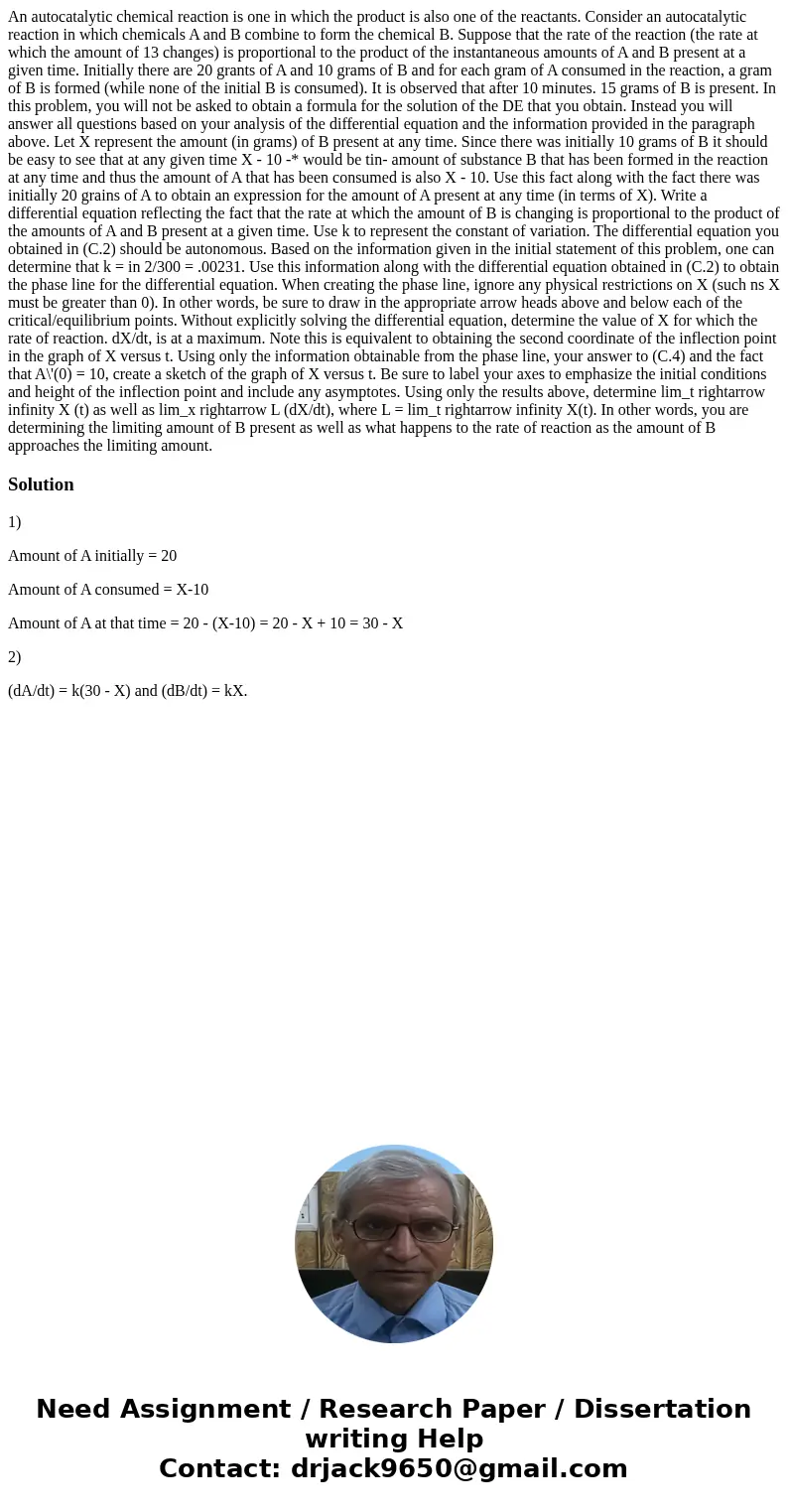An autocatalytic chemical reaction is one in which the produ
An autocatalytic chemical reaction is one in which the product is also one of the reactants. Consider an autocatalytic reaction in which chemicals A and B combine to form the chemical B. Suppose that the rate of the reaction (the rate at which the amount of 13 changes) is proportional to the product of the instantaneous amounts of A and B present at a given time. Initially there are 20 grants of A and 10 grams of B and for each gram of A consumed in the reaction, a gram of B is formed (while none of the initial B is consumed). It is observed that after 10 minutes. 15 grams of B is present. In this problem, you will not be asked to obtain a formula for the solution of the DE that you obtain. Instead you will answer all questions based on your analysis of the differential equation and the information provided in the paragraph above. Let X represent the amount (in grams) of B present at any time. Since there was initially 10 grams of B it should be easy to see that at any given time X - 10 -* would be tin- amount of substance B that has been formed in the reaction at any time and thus the amount of A that has been consumed is also X - 10. Use this fact along with the fact there was initially 20 grains of A to obtain an expression for the amount of A present at any time (in terms of X). Write a differential equation reflecting the fact that the rate at which the amount of B is changing is proportional to the product of the amounts of A and B present at a given time. Use k to represent the constant of variation. The differential equation you obtained in (C.2) should be autonomous. Based on the information given in the initial statement of this problem, one can determine that k = in 2/300 = .00231. Use this information along with the differential equation obtained in (C.2) to obtain the phase line for the differential equation. When creating the phase line, ignore any physical restrictions on X (such ns X must be greater than 0). In other words, be sure to draw in the appropriate arrow heads above and below each of the critical/equilibrium points. Without explicitly solving the differential equation, determine the value of X for which the rate of reaction. dX/dt, is at a maximum. Note this is equivalent to obtaining the second coordinate of the inflection point in the graph of X versus t. Using only the information obtainable from the phase line, your answer to (C.4) and the fact that A\'(0) = 10, create a sketch of the graph of X versus t. Be sure to label your axes to emphasize the initial conditions and height of the inflection point and include any asymptotes. Using only the results above, determine lim_t rightarrow infinity X (t) as well as lim_x rightarrow L (dX/dt), where L = lim_t rightarrow infinity X(t). In other words, you are determining the limiting amount of B present as well as what happens to the rate of reaction as the amount of B approaches the limiting amount. 
Solution
1)
Amount of A initially = 20
Amount of A consumed = X-10
Amount of A at that time = 20 - (X-10) = 20 - X + 10 = 30 - X
2)
(dA/dt) = k(30 - X) and (dB/dt) = kX.

 Homework Sourse
Homework Sourse